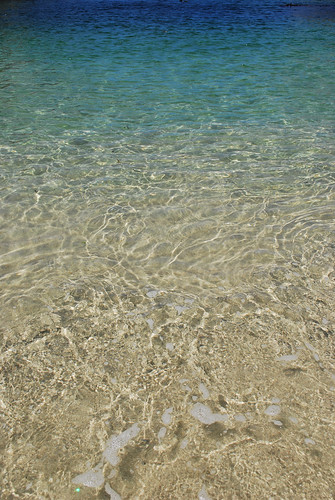
{Photos by rocketlass.}
In honor of my recently renewed membership in the Hakluyt Society--a group dedicated to travel writings from the Age of Exploration--after more than a decade's lapse, how about a voyage? Before the weather turns and locks us all in our harbors, with nothing but the stories we've already told and retold for company, why don't we push off into the trackless waves of my recent reading and see where the sea appears?
We'll start with The Axe and the Oath: Ordinary Life in the Middle Ages (2010), by Robert Fossier, who reminds us of the mystery and fascination of the ocean in the days before longitude and proper charts:
In spite of its dangers, the liquid immensity of the ocean fascinated men and inspired wonder. As with nautical sports and oceanic competitions today, people of those centuries saw the sea as fully charged with marvelous and dreamlike qualities. The shore was a line of contact with the unknown and the imaginary; the ocean, and even the more modest bordering sea, were a world of adventure, of the silence of men, and of the perpetual movement of things. the ocean was where the paradisiac worlds or the marvelous islands sung of in Celtic, Scandinavian, and ancient folklore--the myths of Atlantis, Thule, or Greenland--were to be found. It was the thought that by confronting danger one might reach Purgatory, or perhaps even Paradise, that sustained the soul.From there, we'll take ship with the most recent publication of the Hakluyt Society, William Robert Broughton's Voyage of Discovery to the North Pacific, 1795–1798. In his entry of May 17, 1797, Broughton recorded the loss of one of the expedition's primary vessel, the poorly named Providence:
At 1/2 past 7 White water was seen ahead and upon each Bow and reported to the Officer of the Watch (Lieutenant Vashon) and almost immediately after the Ship Struck upon a Reef of Coral Rocks. Having plainly felt the Shock I instantly went upon Deck (& met in the passage Mr Vashon coming to acquaint me with our disaster). . . . The Ship began to make water fast and the Violent Shocks she receiv'd render'd it doubtful whether the Masts wou'd stand while getting the Longboat into the water. . . . At daylight we had Fresh breezes & hazey weather from the NNW & we dispatch'd our Boats under the Masters directions to save every thing that might be of future use from the Wreck. . . . Every moveable Article was floated away. Nor was there any sign of Books, Mathematical & Nautical Instruments of any kind remaining to my great disappointment and Mortification. . . . The Master finding no Provisions, Liquor or any other useful Stores cou'd be got at by our remaining near the Wreck in the Schooner & our Water in board being very trifling for our Numbers it became a principal consideration to procure some at the Islands, as our existence depended upon it and we knew the Island to be inhabited we accordingly cleared the Boats.

To the Island, then . . . which leads to one of the most visually stunning, unusual, and rewarding books of the year, Judith Schalansky's Atlas of the Remote Islands: Fifty Islands I Have Never Set Foot on and Never Will. The Providence wrecked farther north than Macquarie Island, off Australia, but would, it seems, have found ample company had it come to rest there:
It is only with great difficulty that, in January 1840, the crew of the Peacock manage to land without losing their ship. The men explore the steep rocky ground, gathering specimens of the sparse vegetation. Lieutenant Charles Wilkes comes to the conclusion that Macquarie Island offers no inducement for a visit. Only the midshipman Henry Eld is overwhelmed when he walks down to Hurd Point on his own. Grass-covered shipwrecks moulder in every bay and on every beach, skeletons of ships in a sea of penguins, of which the island has millions.They might have done better on Antipodes Island, off New Zealand--for at least from there they would have known that all ways were the way home:
When Captain Henry Waterhouse discovers it on his way from Port Jackson to England, he calculates that the island is almost directly opposite the zero meridian of Greenwich. A reflection of a place, he thinks, a tiny doppelganger of the British Isles. London, his birthplace, is as far from here as the North Pole is from the South, and so it does not matter which route home he takes. England and this place are points at either end of a skewer through the globe, an imaginary line through the centre of the earth.Knowing that, let's chuck the compass overboard, let the sextant sink, and let our course be determined solely by a desire to keep winter at our backs and summer in our sights. Give 'er some sail; let's see how long we can outrun this beast!

Judith Schalansky's book is a thing of wonder, isn't it? Definitely one of the best books I've read this year. Gorgeous!
ReplyDeleteWhat I love about Schalansky's book is that depending on your mood, you could argue that each of its several aspects is its best quality: the design, the illustration/mapmaking, the actual bookmaking, and, finally, what I settle on again and again, the selection and writing of the vignettes about the islands. There's so much good stuff there, and I'm very grateful to my friend at 57th Street Books who grabbed me and put it into my hands the day it arrived.
ReplyDelete